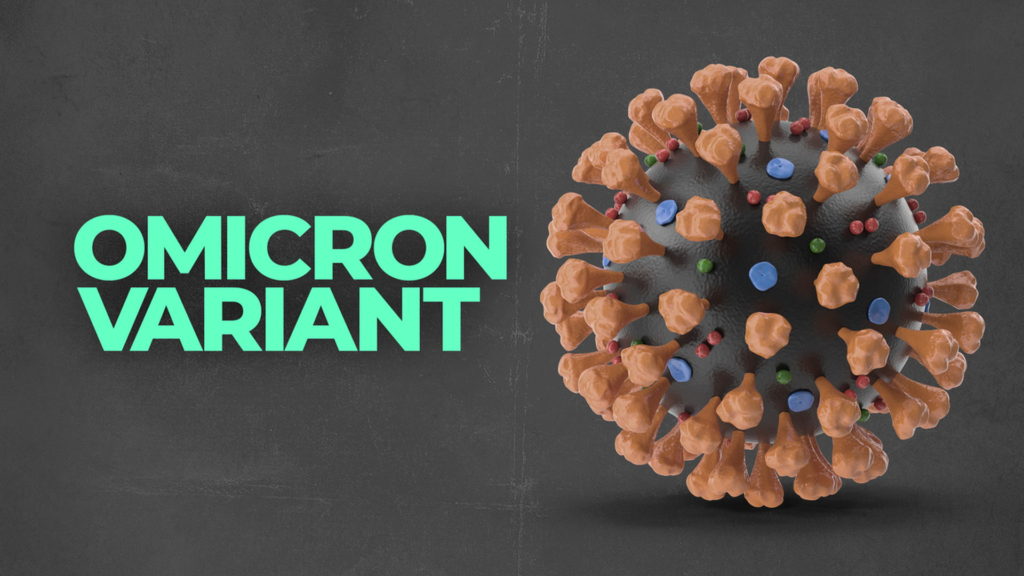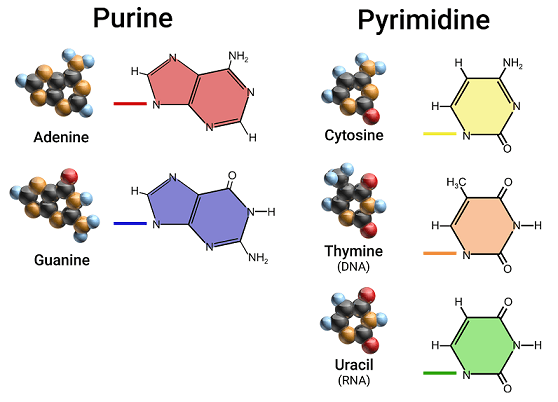The variations in Omicron variants and our ammunitions to fend them off

I will attempt to explain the changes in the new variant Omicron and explain the mechanism of the therapeutics available to us so far to fend off the changes in the virus. It is only after we have delved into these can we decide to panic or keep calm and carry on. An army going to battle against a strong nation can either panic or be confident of winning the battle depending on their available ammunitions and soldiers and how they deploy them.
What we know so far about Omicron Covid variant?
South Africa announced the sequencing of a new variant of the covid virus with multiple mutations in important areas, especially the spike protein. The mutation is presumed (not verified yet) to result in three important things.
- May spread easily among both vaccinated and unvaccinated people.
- More capable of gaining access into our cells to cause harm.
- May overcome our natural or vaccine induced immunity
These are what scientist think the mutations are likely to cause (these are not conclusive yet). Before we can appreciate what is going on, it is important we understand the basic mechanism by which mutations occur, especially the role of proteins in humans and the virus.
The basic structure of proteins and their relevance to us and coronavirus
I am pretty sure if you ask kids of primary school age what proteins are, they will not hesitate to give examples of foodstuffs like meat, poultry, beans, and other sources of proteins. We were taught in primary school that proteins are necessarily for building blocks and help us to grow. These proteins we get from food is not entirely the same as the proteins we referred to when we hear terms like “spike protein”, “antibodies”, “antigens” etc. All these are also proteins, but we cannot get them by eating already made meal. You cannot buy them from a supermarket as you would pop into your shop and grab a full plater chicken for your dinner to increase your protein proportion in a diet, but they are also proteins.
Proteins are one of the most important substances to all animals. Proteins to our body are like currencies like dollar, pound sterling or Ghana cedi to a country. When our body wants to interpret some portions of our DNA, it does so by first converting that portion into messenger RNA, using an enzyme in our cells known as RNA polymerase in a process referred to as “transcription”. The mRNA is then moved into a structure within our cells known as “ribosomes”, which is the “factory” where proteins are made in our cells.
The ribosome synthesis three bases of the mRNA at a time. The three bases are known as codons. Each codon would produce a different amino acid. The “tread” containing the different amino acids would then fold in different ways to produce different proteins. There are 20 different amino acids, each coded by three different bases. Any changes in the arrangement of the amino acids would result in a different protein. The bases are therefore the most important structures that determines the type of amino acid and subsequently protein that would be produced. Any changes in the bases would change the amino acid synthesized in the ribosome and change the protein produced eventually. So, what are these bases?
Bases

Bases (or nucleobases) are the key to mutation of the coronavirus and the effectiveness of antibodies generated either naturally or through vaccination. They are biological compounds containing nitrogen and other elements such as oxygen, carbon, and hydrogen. Bases form pairs in both DNAs and RNAs. Bases can be positively charged (+), negatively charged (-ve), non-polar (no charge), or aromatic. These intrinsic properties of bases are the most important thing that can either make a virus like Omicron coronavirus evade our acquired antibodies or make the vaccines ineffective in combating it.
Bonding
Interactions of our antibodies and other immune mediators with a virus such as the coronavirus can be in three different forms.
- Hydrophobic and Van der Waals interaction
- Charge-to-charge interaction
- Covalent disulphide interaction
The degree of the three interactions above are not the same. Hydrophobic and Van der Waals interactions are the weakest. Charge to charge interactions depends on the type of charges. Covalent disulphide interactions are the strongest and potentially permanent.
Like charges repel and unlike charges attract. Therefore, we would expect a positive charged base to attract and bond strongly to a negative charged base just like a magnet would attract and bond to a metal such as a nail. Likewise, a positive charged base would repel another positive charged base (same as negative bases). This phenomenon is the main reason why virus and other microbes can mutate and evade our immune system.
How antibodies are produced
When the coronavirus (or other microbes) attacks us through the nose, eyes, and mouth as I explained in my previous post, our body would attempt to fight it using pre-existing defenses which is known as the “innate” immune response. This response is quick but less specific and can cause more harm than good as I explained in previous post. The most effective and specific immune response is the “adaptive” immune response, which can take somewhere between 10 to 14 days and would depend on several factors. It is through the adaptive immune response that specific antibodies and T-cells are produced purposely for the virus.
As the innate immunity attempts to fight off the virus, depending on how successful the process is, your adaptive immunity may not be initiated. Therefore, someone not vaccinated but get covid and fights it off may not develop any antibodies. If the innate immunity is unable to fight the invading virus within a reasonable time frame, then a copy of the genetic make-up of the virus is taken by some specialized cells, especially the dendritic cells which populate our external defenses, i.e., our skin, nose, mouth etc. into other cells within our bone marrow, where stem cells divide constantly to replenish our red blood cells and white blood cells.
The outside signal (information about the virus) would activate some transcription factors in the nucleus of our DNA to “switch on” the part of our DNA that can produce mRNA that possess significant bases and therefore amino acids and proteins that can bind to the important part of the virus (the spike protein). We know the only means by which the virus can gain access to our cells is by using its spike protein (the crown). So, the mRNA produced because of the activation of the transcription factors must have the relevant bases that can cause a strong bonding of the antibodies to the spike protein. The mRNA is then converted into amino acids in our ribosomes and folded into proteins and then exported out of the cells into our bodies circulatory system to seek and bind to the virus for destruction.
Effector cells, memory cells and long-term immunity
We have heard a lot about how we lose our immunity six or few months after vaccination or natural immunity. How is that possible? When the appropriate antibodies (proteins) are synthesized successfully by our adaptive immune response as described above, the newly produced antibodies roam our circulatory system to identify and bond to the invading viruses. The new antibodies are termed ‘naïve” until they interact with the virus. They become matured after the interaction and go into speed mode by dividing into two types of its kind, a plasma cell (like a mass production factory) and a memory cell. The plasma cells of the antibodies produce lot of copies of the antibodies to match up to the number of circulating viruses and even leave extra to police our system when all the viruses have been eliminated from our system. The effector cells (antibodies) numbers begin to dwindle through apoptosis (cell destruction) if there are no more viruses to eliminate. However, the small number of memory cells of the same antibodies can last for up to 2 years or more to fend off the virus in a re-infection. This is what give the long-term immunity.
Re-infections after vaccination or natural immunity, why?
Remember, the coronavirus has not vanished from the surface of the earth even though you got covid, recovered or was vaccinated and never felt any symptoms. They are here with us and would possibly stay forever like the flu virus. You can still encounter the virus, especially during the cold seasons as I explained in my previous post. The most important thing is how your body respond to the virus in the second, third, fourth or any number of times you are exposed to it. And this is where the memory cells come into play. I have not mentioned T-cells so far, but they are also very critical in the adaptive immune response and in most cases, viruses may not be eliminated without their involvement. There are some similarities and differences between the two which we may re-visit in future post. By the time you are exposed again to the virus, several things may have happened.
- Your circulating antibodies may have undergone self-destruction (apoptosis) as explained above, leaving a tiny number of memory cells to take over the hunt.
- The virus may have mutated either extensively (as in the case of Omicron) or minutely
- You may have developed other conditions that has reduced the ability of your immune system to mount a robust defense. For example, deficiency in folic acid, which is essential for cell division or anaemia or bone cancer can severely impact the generation of stem cells in your bone marrow.
How the virus mutates and the importance of herd immunity
The virus like any other living organism aims to survive and procreate if it is “allowed” to do so. And as I explained in my previous post, the virus cannot independently survive and make copies of itself without a “host”, which in our case its our cells. We have looked at the extent and speed with which both our innate and adaptive immunity attempts to eliminate the virus when infected. If you have been vaccinated or has acquired natural immunity to previous infections, there is a high probability that you may have acquired some memory cells of the same “signature” capable of bonding to the virus. The relevant of this is TIME. Your immunity is not starting from ground zero as previously. The memory cells can turn into plasma cells and produce numerous effector cells to fight off the new but “same” invading viruses. You may therefore develop mild or moderate symptoms due to the indiscriminate activation of innate immune response until your memory cells have encountered the virus and gone into production. This process reduces the time and opportunities for the virus to invade our cells and make copies of itself.
So, what about the unvaccinated and unexposed person? Here the story is a bit different because the virus has got time and unfettered access to our cells until both the innate and adaptive immunity are able to mount a proper defense. Every time the virus divide is a potential for new variant to be produced. The virus can make 1000s of itself within a short time, potentially increasing the risk of variants. If the new variants produced have different arrangement and types of bases or amino acids, then the spike protein produced (as the case of Omicron) would be different. Let’s assume the original antibodies and memory cells produced against the initial infection had “positive charges” and bonded to the negative charges of the virus, but now the new variant has replaced the bonding site with a positive charge, we would expect a repelling of our antibodies when it encounters the new variant. So, you have antibodies from previous infections or vaccinations, but they are effectively “useless” due to the charges in the base pairs and types of amino acid in the spike binding site. This is one of the causes of resistance of microbes against therapeutics such as vaccination.
Therefore, the saying “All is not safe until we are all safe” is crucial in our fight against coronavirus. Unless majority of the World population are either vaccinated or exposed to the virus, we can shut our borders to all travels like New Zealand and Australia did in the first wave and still get a super-variant virus that can make all previous vaccinations useless. The West can store tons of vaccines and leave African countries destitute without enough vaccines to go round majority of their population and with time the vaccines would become useless depending on the extent and location of mutations of a variant. Vaccinating the entire world with double and triple doses would deprive the virus “time” and “space” to divide and produce variants.
So, should we panic? I would say not yet! Why?
I have explained how bonding between our antibodies and the virus occurs. What we need to understand is that there is a possibility of more than one bonding interactions occurring between our antibodies, especially through vaccinations (because it can be tweaked in the lab) and the virus. Let us assume the vaccines developed has binding sites to the virus that exhibits hydrophobic Van der Waals interaction, ionic interaction and covalent disulphide interactions or a combination of them. Having more than one binding site and interactions offers robust defenses and prevents the virus from escaping when trapped. However, if the virus is to mutate as the Omicron variant has done and our antibodies lose let’s say the covalent disulphide interactions, they can still rely on the ionic interaction or the hydrophobic interactions to offer “some” form of bonding. The relevance of this is that depending on how the vaccines were made and the number of available interactions to bond to the new variant, you may not feel any serious symptoms. This is probably why the South African health authorities who sequenced the Omicron variant has not seen a significant proportion of hospitalization despite the high infection rate of the new variant, and the majority of those in hospitals are the unvaccinated. The vaccination rate in South Africa is low (less than 50% of adult population as at the time of this post) due to vaccine hesitancy and vaccine availability according to some sources. South Africa boast of high level of natural immunity due to prior infections. However, natural immunity has some differences to vaccine induced immunity. Vaccines can be tweaked to increase potential binding sites; natural immunity cannot be manipulated.
The role of oral antiviral drugs.
In my previous post, I explained the significance and limitations of the newly produced oral antiviral drugs by Merck, Pfizer and now AstraZeneca. The efficacy reported by Merck has since been downgraded to 30% from 50% by the United States Food and Drug Administration (FDA). We must remember that clinical trials were conducted in the non-vaccinated and non-antibodies persons. It is yet to be tested in the vaccinated or someone with natural induced antibodies. Where the drugs have an advantage over vaccines is that all the vaccines target the spike protein of the coronavirus, and this is what has undergone significant mutations sending some governments into panic mode. The oral antiviral drugs DO NOT target the spike protein and would still be effective against the mutated Omicron virus provided the new variant has not altered replication enzyme or process (no evidence of that so far). So, how healthcare professionals deploy all the available tools including booster vaccines and oral antiviral drugs would be crucial as we make our way through winter and beyond.
Adaptability of the vaccines
Some pharmaceutical companies that have produced vaccines against coronavirus so far has promised they can tweak their existing vaccines to cater for the Omicron variant. What they would probably do is to identify the changes of amino acids and bases within the new variant and compare it to the previous variants (alpha, beta, delta) and increase the number of bonding interactions with the new variant.
So, we are not in 2019 when the coronavirus was unleashed onto us. We have come a long way in terms of our understanding of the virus. We have produced vaccines that has so far managed to prevent serious illness and death in majority of the vaccinated and can be tweaked within a matter of days. We have some oral antiviral drugs that work independently from the vaccines. We are well prepared to beat this virus without the need for lockdowns (we cannot lockdown forever). All is needed is for us to convince the unvaccinated to be vaccinated, distribute ALL the available therapeutics, including the oral antiviral drugs to all corners of the World so together we can beat this virus and get our lives back.
Keep Calm and Carry On

Thank you for the post and explanation to the situation of this omicron variant of Covid.
I very much hope that there won’t be any more lockdowns. I agree with what you said, we are in a much better place than we were in 2019.